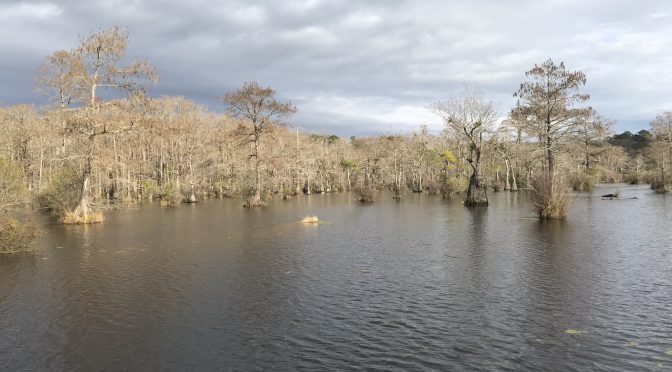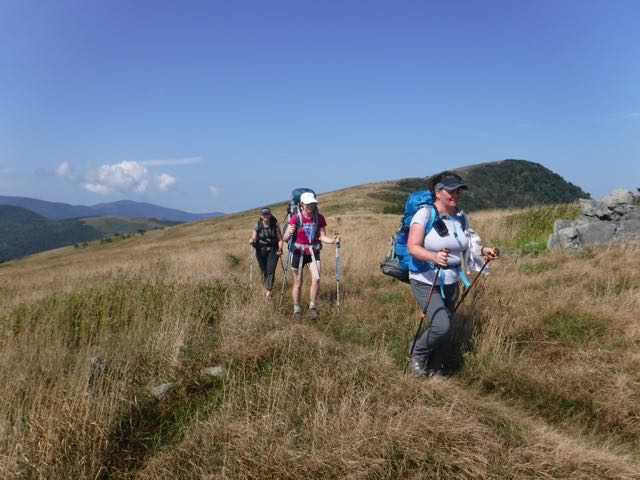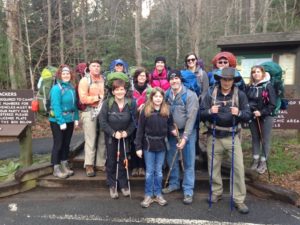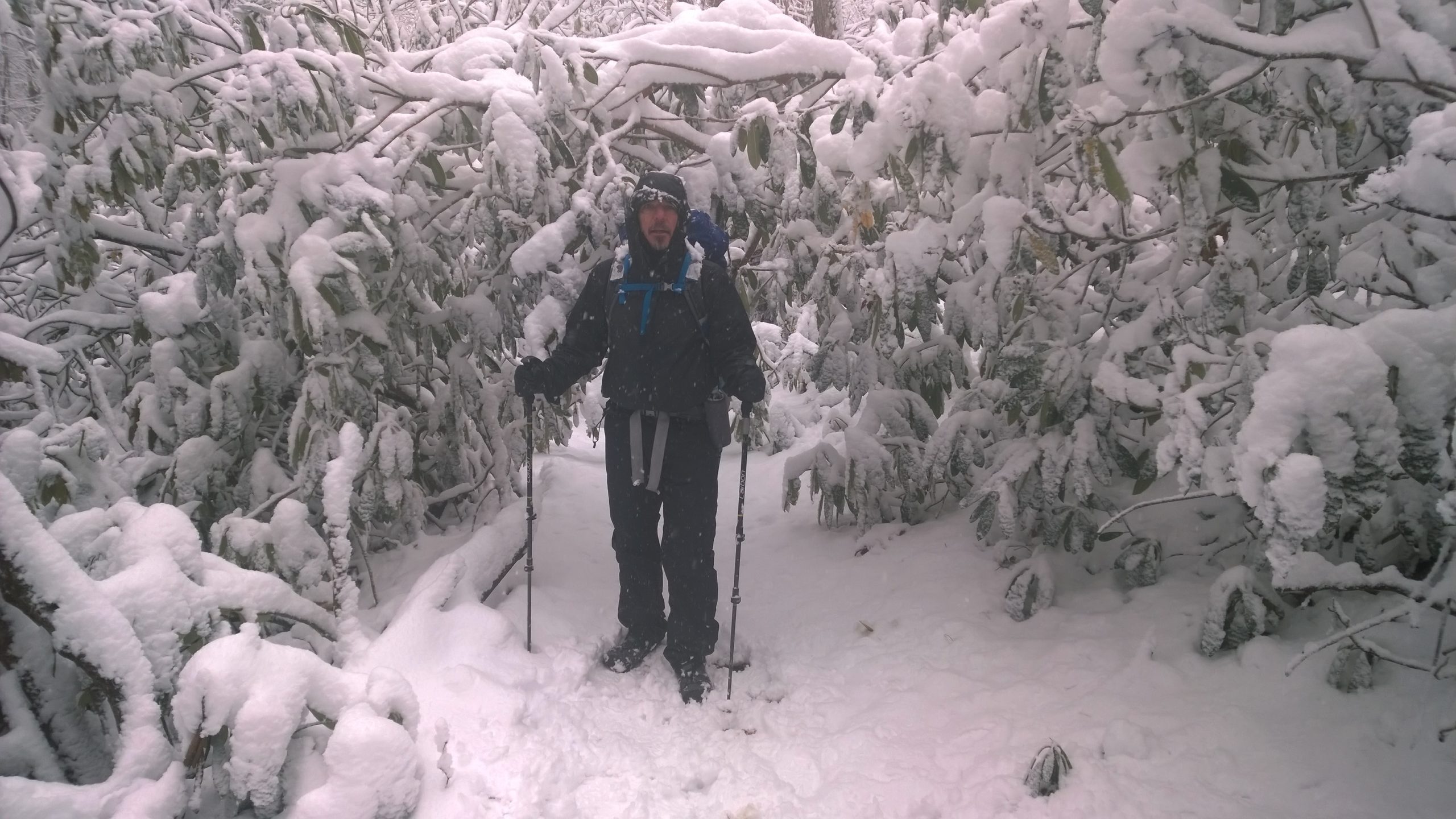To hike, or not to hike. That was the question Monday upon waking to see that not only were Sunday’s 11 inches of snow still on the ground, but Mother Nature was adding another two. The second hike in our Tuesday Night Hikes series was scheduled for the next evening, on a stretch of the Mountains-to-Sea Trail along Falls Lake; looking out the window, I wondered if we could pull if off.
Thus began the evaluation process we go through when deciding whether the weather will affect a planned hike. It’s a process that goes something like this:
=&0=& I started following the forecast for Tuesday night a week ago. There was a suggestion of weekend snow at the time, though, as is often the case with snow, the amounts were vague, as were the locations to be affected. Usually for a day hike, I don’t start checking the forecast until two or three days out; for overnight trips, I begin checking about a week in advance to get a general idea of what might be coming. Three days out I will take a second, more serious look. If it appears weather could be an issue, I’ll …
=&1=&=&2=&The Tuesday Night Hike roster is a mix of experienced and less-so hikers. A decision about whether to hike in this case is complicated by the fact that the hike is at night, and not all the hikers — even the experienced ones — are as comfortable hiking under the lights. In general, if it’s an entry level trip I’ll judge the weather with a more critical eye for two reasons: 1) these are beginners, just starting out and might not have the gear to deal with rain, with cold or less- than-ideal conditions; 2) We want beginners to have a good first experience. You do an overnight trip with daytime temperatures around 70, overnight lows around 50 and clear skies, and who isn’t going to want to come back? On the other hand, if it’s an experienced group, we’re more likely to proceed if the weather isn’t optimal. About the only two things that will scuttle a trip for experienced folks is extreme cold (15 F or less) and a high likelihood of electrical storms.
=&1=&=&4=& Three days, because if the weather looks convincingly grim, this is when you need to begin alerting people that the hike may not happen, less so for a shorter day hike, but certainly for an overnight trip that people have to make plans in advance for, like canceling a pet sitter. I usually don’t make a final call this far out, but will let people know that the trip is in jeopardy and when we will let them know if it’s still on. In the case of our Tuesday Night Hike, on Saturday, milk, bread and eggs were flying off the shelf as the forecasters were growing more certain of snow, and lots of it.
=&1=&=&6=& On Monday, it was less the forecast for Tuesday night and more the reality of the day. I wasn’t sure how much snow had fallen at the trailhead, but it was likely between 8 and 13 inches. The forecast called for some warming Monday and afternoon and Tuesday, but refreezing overnight: this snow wasn’t going anywhere soon. And what did melt was likely to turn to ice once the sun set. Usually, we’ll wait until the day before, at the earliest, to call a hike. Much can change in a forecast, which is why we sometimes will wait up until three hours before a hike to make a final call (in such cases, that’s often because we’re waiting to see what the weather radar, the final arbiter, indicates). A day out is when we start to consider our four cancellation factors:
=&1=&=&8=&: =&9=&. We usually don’t cancel a hike because of extreme cold, but we will let people who have signed up know what kind of gear they will need to survive — yes, survive — a very cold hike.
=&1=&=&11=&. I personally love hiking in the rain, even a sustained rain. But then, I’ve got the gear for it. A forecast that looks reliably wet warrants an email to those who’ve signed up as to the rain gear they will need if they don’t want to wind up damp and dour.
=&1=&=&13=&. This is a big one. If just getting to the trailhead could be treacherous, we’ll cancel a hike.
=&1=&=&15=&




